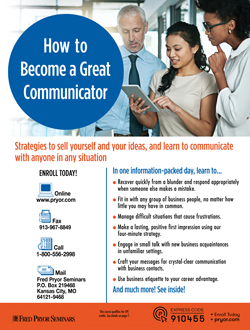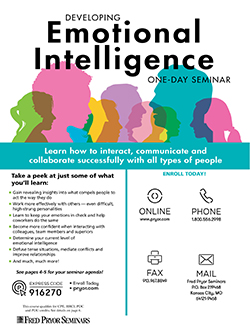The Email Tennis Match…Business Communication at its Worst
 It happened again. I’m copied on an email and have become part of an email tennis match, watching the emails go back and forth between two colleagues. At this point, no one is winning and the emails are becoming more heated with every exchange.
It happened again. I’m copied on an email and have become part of an email tennis match, watching the emails go back and forth between two colleagues. At this point, no one is winning and the emails are becoming more heated with every exchange.
Have you ever sent an email or been included as a “cc” on an email, and the whole thing blew up in your face (or rather…blew up your email inbox)? How can something as innocent as an update, question, explanation or request for information start a flurry of emails that ruffles the feathers of one, two or the entire group in the email, and never accomplish the initial goal of the email message?
I’ve learned there are three main reasons why this seems to happen: invisible filters, delivery of message and the wrong mode of communication. Here are some things to keep in mind when sending email messages at work.
Invisible filters: These are the filters that you don’t necessarily know exist and that skew the message you’re sending.
Invisible filters that may exist:
- Relationship: How are typical interactions with the individual(s) reading the message? Past interactions can influence how your message is read and interpreted. For example, if you recently experienced a disagreement with a coworker, your message may be read with that interaction in mind. So they may read into your email an unintended message because they think you’re angry or still in an ongoing disagreement.
- Mindset: Something as minor as spilling coffee once dressed for work, dealing with stop-and-go traffic, arriving late to work or not feeling well. These things can throw the most calm and collected person for a loop, and put a negative spin on anything that day.
- Past experience: Triggers and incidents from the past can lead to reading things that don’t exist into the message. It may be the message or the words used that reminds the person receiving the message of something that happened in a past job experience. This can lead to incorrect assumptions based upon past interactions or experiences.
What you can do to minimize issues with invisible filters:
- Think about your audience and write to minimize any unintended miscommunication of your message.
- Use words and phrases that aren’t perceived as judgmental. Example: Instead of, “Like I’ve said in the past…” either avoid or change to more factual account, “When we met on Monday, I understood that…”
- Reread your message and try to put yourself in the receiver’s place or have a trusted colleague read your message before you send. If there’s any doubt, take it out.
- Remember, you may not be able to avoid filters that you don’t know exist. If the issue escalates, address it at the time you become aware of the potential issue.
Delivery of message: This is the tone of the message, the words that are used, and more importantly the way text or images are displayed.
A former colleague included many of the following in his emails then wondered why his messages weren’t understood or caused a bigger issue.
- Words in ALL CAPS
- Excessive exclamation points!!!!!!
- Emojis to soften the blow 🙂
How does it make you feel when you see these in an email about a problem or issue? Do you feel you’re being yelled at with all caps, do the excessive exclamation points drive you crazy and does the addition of an emoji make you better? If you’re like most people, there’s a time and a place for these, and email at work is best to be avoided.
Wrong mode of communication: This happens a lot. What should have been a live conversation with an email follow-up message to clarify the conversation starts in email instead. Sometimes this happens to avoid the conflict that face-to-face might bring, we think it’s a quick communication and don’t think about possible confusion, or we want to make sure everyone else knows someone did something wrong.
Email is tricky because you can’t clarify your message in the moment. It’s not until the volley of messages back and forth begins to happen that you become aware that there’s a misunderstanding or an issue about to boil over. Think about your message and decide if it should be delivered face-to-face, with email as follow-up to your conversation.
If you can only change a few things, these are a few ideas that you can begin using immediately to improve overall email communication. And, if you’re stuck in the tennis volley of emails back and forth, consider sharing these ideas with your colleagues. Not only does this improve communication, but you’re likely to cut down on the number of emails in your inbox.









